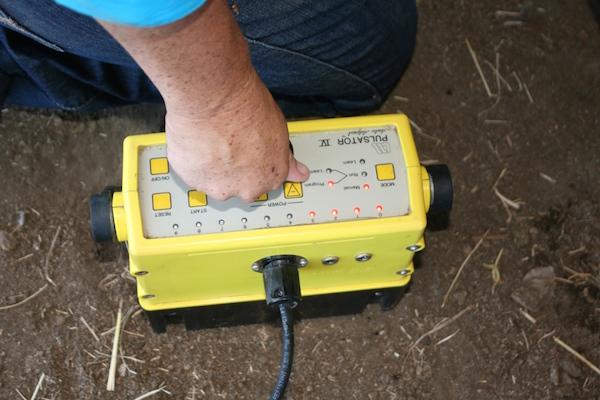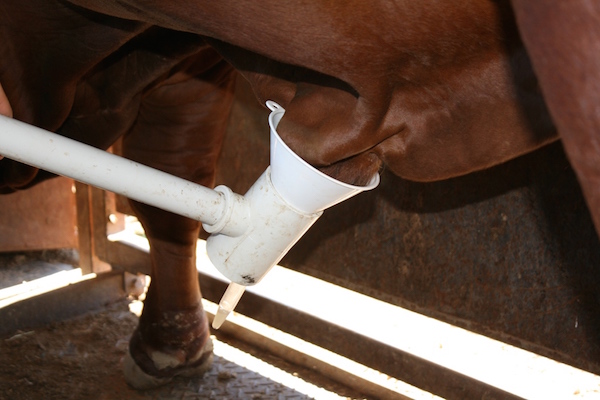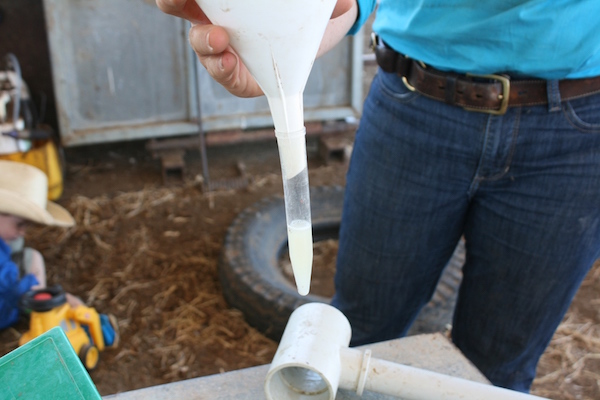Semen Testing Bulls
Host: Eversleigh Station
Written by Jenny Underwood – Owner, Eversleigh Station.
A sound and fertile bull is fundamental to any successful breeding operation. The number of cows which will be joined to a bull is generally calculated on paddock size, country type, length of joining period, and other seasonal and environmental factors. Most bulls will be joined to cows in a multiple sire situation where a number of bulls are in the one paddock. In our operation the joining rate is 2.5% which means that there is one bull for every 40 females in that paddock.
Alongside our commercial cattle operation we also run two Droughtmaster Studs – Eversleigh Droughtmasters and Wallace Vale Droughtmasters. Each year 80 to 100 bulls are prepared to sell in the paddock and at auction sale. Because we are selling the bulls to other breeders we ensure that the animal they buy is ready to go to work as soon as it is going to be joined to females.
One of our preparation prerequisites is that the bull is soundness evaluated and semen tested by a qualified vet. A bull soundness evaluation is similar to a mechanic inspecting a vehicle before issuing a roadworthy certificate. The vet gives the bull a thorough physical check including its head and eyes, legs, and hooves. A bull must be able to seek out fertile females and in some cases, bulls may be required to walk many kilometres through unforgiving country in search of a cow “on heat”. Body condition scoring (BCS), using a scale of one (poor) to five (fat), indicates dental and overall health and is important for longevity of fertility in paddock bulls. If a bull is below 2.5/5 in body condition at the start of the season, it won’t be fertile at the end of the joining season.
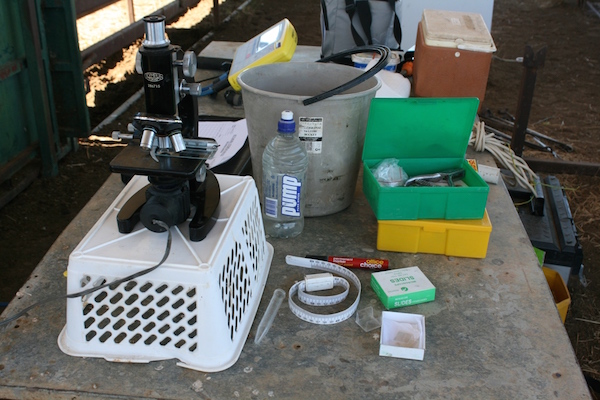 Some of the equipment used by a vet when carrying out a soundness evaluation and semen collection.
Some of the equipment used by a vet when carrying out a soundness evaluation and semen collection.
The vet also checks the testes of the bull to ensure that they are even in size, healthy and neither too hard nor spongy.
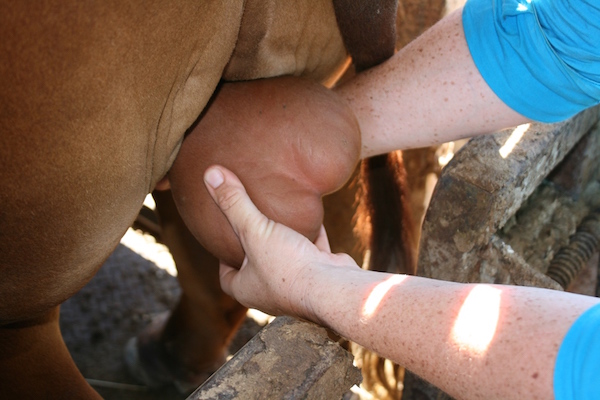
A special tape measure is used to check the scrotal circumference as testes which are too small or too large can seriously affect the serving capacity of a bull.
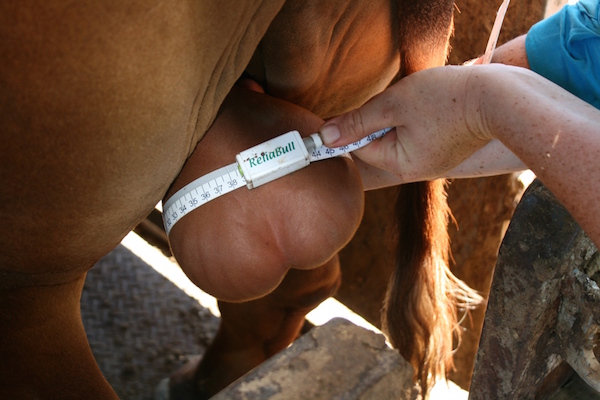
Semen collection and testing involves a number of processes. The most common method of semen collection is by electro-ejaculation whereby a probe that contains an electric current is inserted into the bull’s anus and small electrical impulses stimulate the bull to erection. (A bit of trivia for you – this method of semen collection was developed after observations of what happened when a death row prisoner was electrocuted in the electric chair).
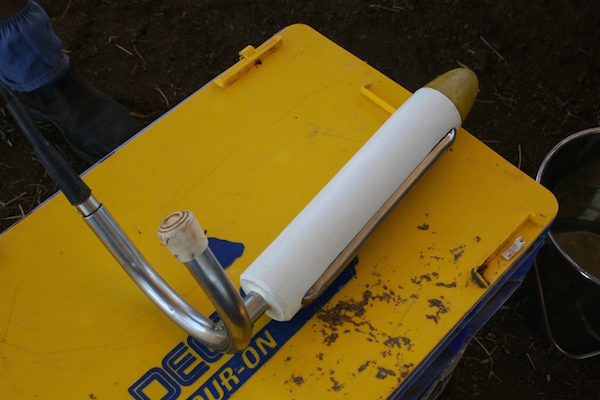
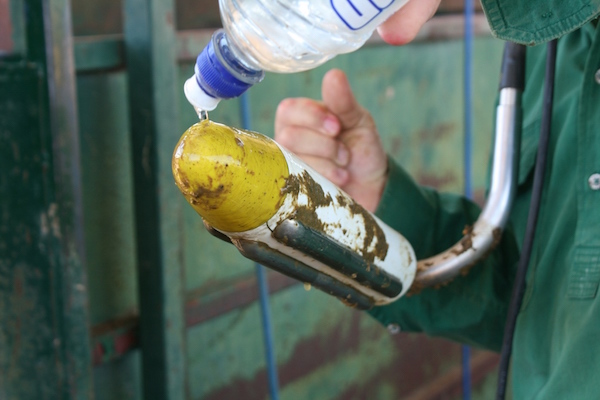
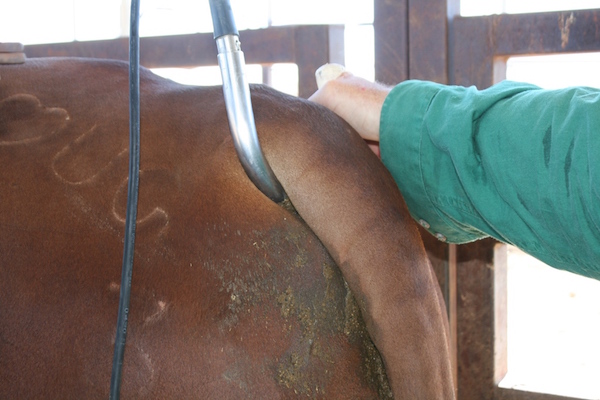
The intensity of charge through the probe is carefully controlled and monitored by the vet.
Once the bull starts to become aroused the vet collects the semen using a funnel and a collection tube. The vet will also be observing the physical structure of the penis and sheath during this time.
A sufficient amount of ejaculate needs to be collected to ensure that enough semen is present to allow objective testing.
A small sample of the semen is examined through a high-powered microscope. When testing the semen motility of a bull, the vet assesses the percentage of live sperm that are “progressively forward motile” (PFM) – in other words how the sperm “swim” and the speed with which they move forward. A healthy sperm should swim forward two times its body length per second.
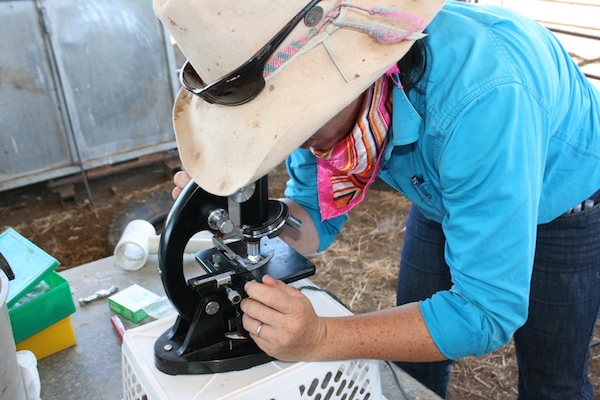
In our bull breeding operation a semen morphology assessment by a qualified morphologist is also carried out. Semen morphology determines the percentage of normal sperm present. While the sperm may be alive they may also have a number of faults many of which can seriously affect the fertility of the bull. The semen morphology of a bull which has a low body condition score at the beginning of the joining season can be seriously compromised.
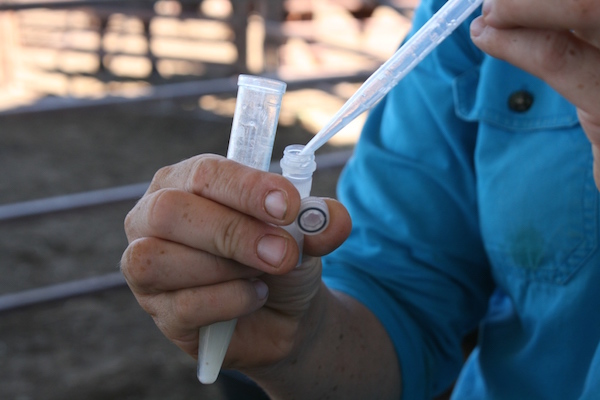
The morphologist uses a small 10×10 grid and, using a very high powered microscope at 1000x magnification, assesses the sperm within the grid for faults. Generally a tolerance of 20-30% of certain faults is tolerated. Once a sample goes over the tolerance level or if more than one fault is detected and the total number of faults is greater than 50% the bull is deemed to have failed its morphology. Retesting of the bull is usually not carried out for about 10 weeks after the initial semen test as it normally takes about 70 days from when the sperm is first “manufactured” by the bull to reach its “use by” date.
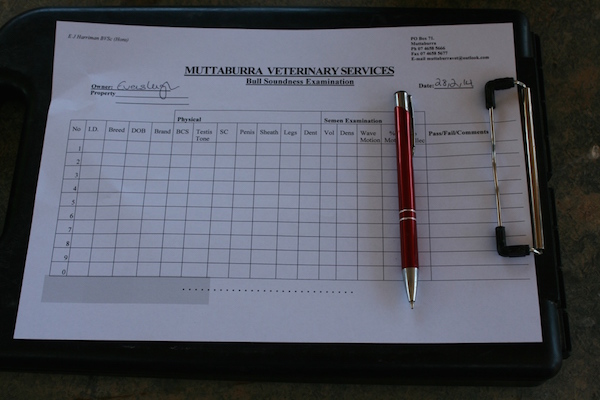
The natural instinct of a bull is to “seek and serve”. In normal circumstances a cow cycles every three weeks. A cow remains in oestrus (“on heat”) for approximately six hours. A fertile and healthy bull will successfully impregnate 60% of 50 normally cycling cows in one cycle i.e. three weeks and 90% in nine weeks – three cycles. Ensuring that the bull is physically and sexually competent to do this is vital in any breeding operation.

